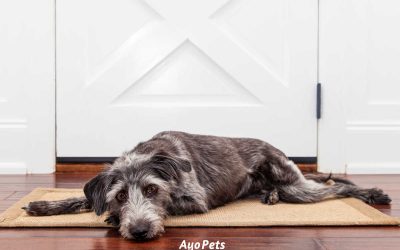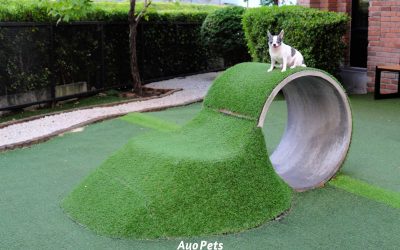My dogs love two things very much: eating and walking. They’d do both all day if I let them. But I’ve heard mixed messages about the safety of feeding and walking around the same time, so I decided to look into it.
It turns out that:
It’s best to feed a dog after a walk, but wait 30 minutes to 1 hour after exercise to feed your dog. If you do it the other way around, feed your dog first and then wait 1-2 hours before going for the walk. If you must walk your dog closer to mealtime, walk slowly and feed only a small amount to reduce the risk of your dog getting bloat.
It’s important to plan your dog’s feeding and exercise times. In this article I’ll share with you what I found in my research and my own experience with my dogs when it comes to the best times to feed your dog and exercise them. I’ll also chat about bloat, how best to avoid it, and some of the symptoms to look out for in your dog.
Why walking a dog right before / after a meal is dangerous
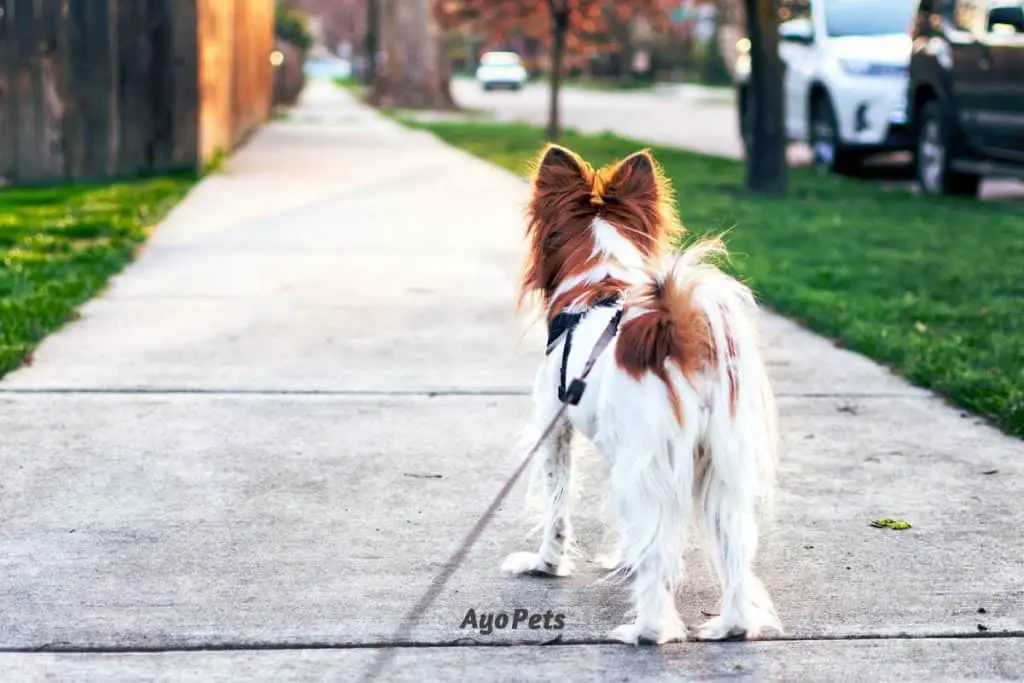
There are a few reasons to give our dog enough time between meals and exercise. If you don’t wait long enough …
Your dog could get bloat
Gastric Dilatation-Volvulus, also known as GDV or bloat, is a serious condition that can kill a dog within an hour. Experts still don’t know the real cause of bloat, but it usually happens when a dog eats or drinks quickly and is active afterwards.
You can’t 100% prevent bloat in your dog, but by understanding GDV you can take steps to minimize your dog’s risk of getting bloat, especially if you have a deep-chested dog that’s prone to getting it.
What Is GDV?
When a dog has GDV, their stomach fills with gas and food. Sometimes this is all that happens.
But sometimes the dog’s stomach gets very bloated and turns over on itself, so nothing can get in or out of it. This twist also cuts off the blood supply, and the dog goes into shock.
This is a life-threatening medical emergency and requires surgery.
Why does the timing of a walk affect GDV?
Bloat usually happens within two hours after eating, which is why it’s so important not to walk your dog right after a meal. You need to let the food settle and any gassy bloat to go down before your dog walks, runs, or does any type of vigorous activity.
You also don’t want to feed your dog immediately after a walk because your dog will be hungry, thirsty, out of breath, and panting. When you get home, your dog will probably gulp down the food and a lot of water quickly, along with a lot of air while catching their breath.
Eating a big meal too fast, drinking a lot of water quickly, and taking in a lot of air at the same time are all things known to cause bloat in dogs.
Do you have a dog that could get GDV?
All dogs can develop GDV, but some breeds are more vulnerable to it than others.
Large-breed dogs with deep chests seem to be at higher risk than most other dogs. The three most vulnerable breeds are:
- Great Danes
- Saint Bernards
- Weimaraners
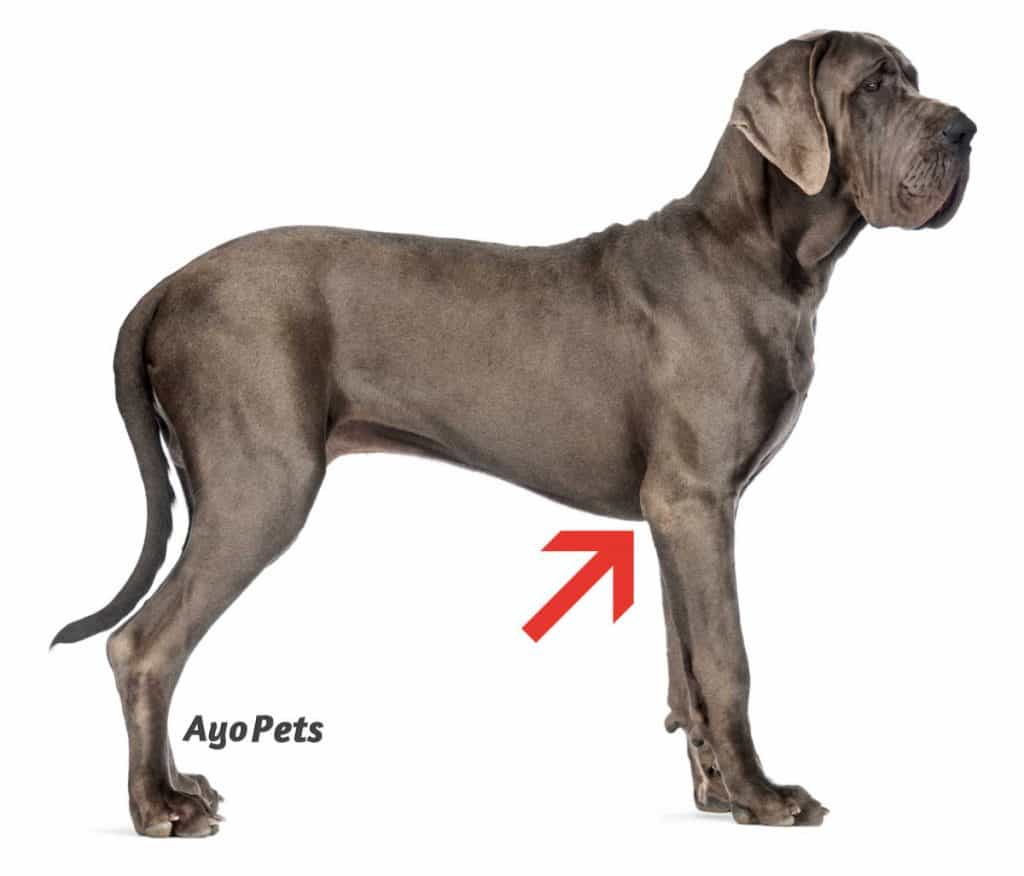
Other dogs at high risk for bloat include:
- Basset Hounds
- Boxers
- Doberman Pinschers
- German Shepherds
- Gordon and Irish Setters
- Old English Sheepdogs
- Standard Poodles
Your dog could vomit or regurgitate their food
Another reason why you shouldn’t feed your dog immediately before or after a walk is less serious than GDV, but it’s still unpleasant. Dogs who eat too much and then go out for a run, walk, or exercise are more likely to overheat and throw up everything they’ve eaten.
Dogs who come in from exercising and eat before they’ve recovered from the exercise are prone to overeating and eating too quickly. They also often regurgitate or vomit up their food because they put too much into their empty stomach too quickly.
Your dog won’t want to walk
This one doesn’t affect all dogs, but it usually has the biggest impact on puppies and older dogs. After a meal, younger and older dogs tend to get sleepy and want a nap, not a walk!
If you take your dog out for a walk too soon after they’ve eaten, they may get lazy on you and refuse to walk. And taking them for a walk when they’re hungry, before they’ve eaten, can also lead to stubbornness and a lack of energy on a walk.
How to prevent bloat from exercise
Because of the seriousness of bloat, it is important to stress here that you shouldn’t feed your dog immediately before or after a meal, if at all possible.
If you must, here are a few things you can do to minimize your dog’s risk for getting bloat:
Limit the amount of food
Don’t feed your dog the entire day’s food or a large meal. The smaller the meal, the better.
You can also remove your dog’s water bowl and simply soak the kibble in warm water, which will make your dog eat less and give your dog liquid at the same time.
Make sure your dog eats and drinks slowly

If you have a dog that gulps down their food and water, do whatever it takes to slow them down. Eating quickly is dangerous for dogs.
You could try:
- Using a slow-feeding bowl. There are plenty of cost-effective options for slow-feeding bowls that slow your dog down when eating. Click here to read my full article on why dogs should use slow feeders.
- Buying a snuffle mat. A snuffle mat, such as this cute mat from Amazon, is an excellent way to get your dog to slow down and use their ‘hunting’ instinct at the same time. Many people use a snuffle mat only for treats, but I find it works well for feeding my dogs regular kibble as well when I want to give them a change and a fun challenge.
- Putting a large rock in the food and water bowls. A cheap way to slow down your dog is to put a large rock in the center of their water and food bowls. Your dog will have to eat and drink around the rock, which slows them down a lot.
Keep walks to a calm, slow pace
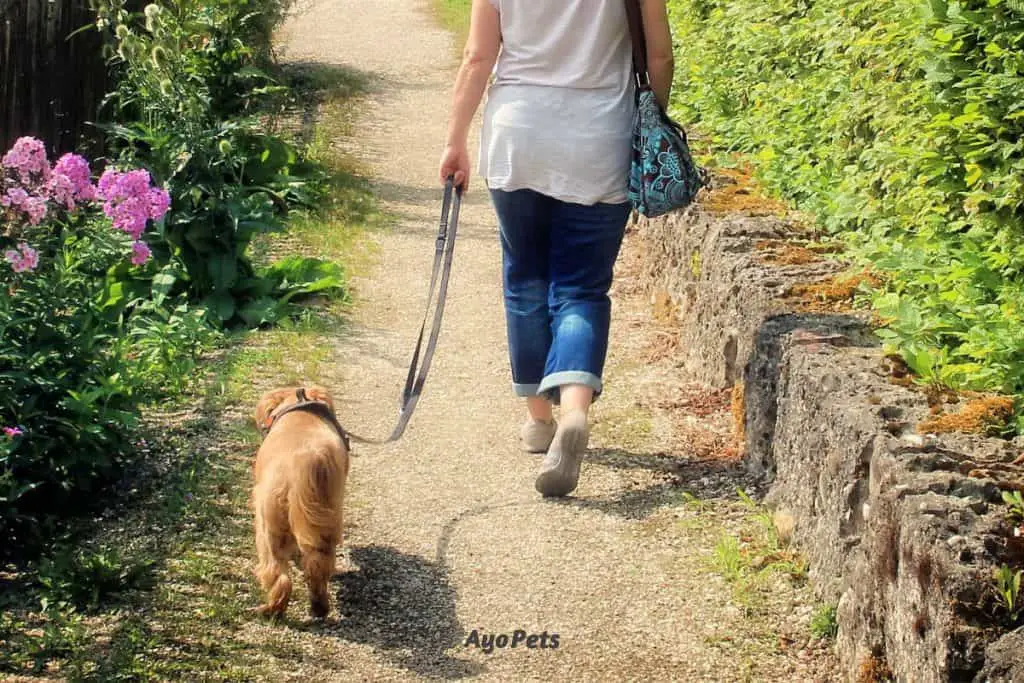
Finally, if you must walk your dog immediately before or after feeding them, make your walk calm and slow. Don’t let your dog run around, fetch things, or play with other dogs.
Keep your dog on a leash, and walk in a relaxed, calm stroll.
Try not to let your dog get overly excited by anything, like a stray cat. Stress and excitement can cause bloat in a dog. And you don’t want your dog pulling against their leash and collar, and then standing up to jump around on their back legs.
Symptoms of bloat
Recognizing bloat early is the best chance your dog has to survive. Here are some of the most common symptoms of bloat:
- Restless pacing, whining, and groaning
- Swollen stomach that’s painful when you touch it
- Excessive drooling
- Dry heaving, but unable to vomit
- Excessive stretching, particularly with their back ends in the air
- Straining to poop but not pooping
- Trouble breathing
- Pale gums
- Collapsing
Some of these symptoms, such as pacing, can indicate other less serious conditions, so don’t panic every time your dog whines or groans. But if your dog shows a few of these symptoms at the same time, get them to a vet right away.
Final thoughts
GDV is very serious, and the best cure for it is prevention. One way of preventing bloat is to leave enough time between feeding times and walking times. The best time to walk your dog is 30 minutes to one hour before a meal, or at least one to two hours after feeding them.
Try to never feed your dog immediately before or after a walk, but if you have to do this, take precautions by giving your dog a small meal and making sure they eat slowly.





